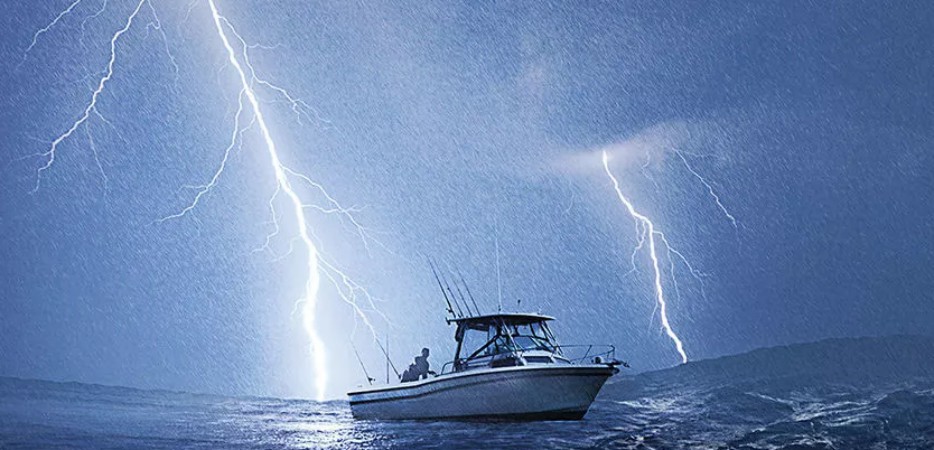Strategies for Navigating Thunderstorms

Any of us who live or boat in Northwest Florida are familiar with the power occasionally unleashed by Mother Nature on our watery, Emerald Coast playground. Thunderstorms and lightning are simply facts of life that local boaters must prepare for, and respect.
The BIG question: how can you best prepare for Mother Nature’s occasional flashy tantrums?
And, equally important: what to do if you happen to be caught on the water when lightning strikes?
Your friends and fellow boaters at Emerald Coast Marine Center have compiled several recommendations from a few leading marine industry sources to help educate and keep you safe on the water. We highly encourage skippers and crew to familiarize yourselves with boating safety practices and recommendations.
NOTE: our purpose in sharing these facts is not to frighten our local boating community, but rather to make sure you understand the importance associated with safe boating as is relates to weather. While the chances of your being negatively impacted may be statistically low, we are firm believers that it is better to be safe and educated, than sorry.
We invite you to share this blog with boating friends and family!
FACTS FIRST.
- Summer months are the most common for thunderstorms and lightning here in NW Florida.
- The prime time for water-borne strikes range between noon and 6 pm.
- The National Safe Boating Council and the National Weather Service reminds us that thunderstorms can develop quickly and create dangerous wind and wave conditions. Storms can bring shifting and gusty winds, lightning and may usher in severe weather conditions.
- These two venerable organizations also point out that there are “no specific warnings or advisories for lightning … but all thunderstorms produce lightning.”
- Did you know that lightning has the capacity to strike up to 15 miles outside of the storm … and without the traditional flash you’ve come to expect with this activity?
- BoatU.S. reports that one in 1,000 boats are hit by lightning each year. While these percentages are low, keep in mind that Florida accounted for 33 percent of BoatUS claims over a 10-year study.
ADVANCE PLANNING PAYS OFF.
At Emerald Coast Marine Center, we encourage you to follow the Boy Scout motto: Be Prepared! By planning in advance, you and your family can minimize the chance for that unexpected encounter.
-
- Check weather conditions in advance of your boating plans and continually monitor developments.
- Keep your finger on the timely pulse of local conditions.
- If a storm is brewing, always WAIT IT OUT vs. RIDE IT OUT!
- Check your local weather experts/channel for an updated boating or marine report. We recommend the Weather Channel or a buoy weather APP.
- Check your APP store for the latest and greatest! Boating Magazine recommends using your smartphone with NOAA lightning tracking info to provide a terrific onboard tool for avoiding storms. Search “Lightning app NOAA” for iPhone and Android options. http://www.nws.noaa.gov/om/marine/home.htm
- Another good source of information: the National Weather Service www.weather.gov
- No matter your boating or fishing destination, what will you do and where will you go should a thunderstorm arise? ALWAYS have a plan of action.
WHAT TO DO.
If you happen to find yourself caught in a thunderstorm, what action should you take?
Here are a few excellent recommendations from the National Safe Boating Council and Boating Magazine.
|
FINAL THOUGHTS.
Your crew at Emerald Coast Marine Center is committed to your boating safety.
As a reminder, we encourage our valued customers to always file a float plan prior to departure. In addition, be sure you have contact details stored in your phone directory to include the name and phone number of your dockmaster and/or any support groups such as Sea Tow or BoatUS should you require help. Familiarity with the VHF radio and the local emergency channel is critically important.
If you’d like to brush up on more great boating safety tips, please visit the National Safe Boating Council at www.safeboatingcouncil.org
Feel free to share this link with friends and family on your social media channels!
